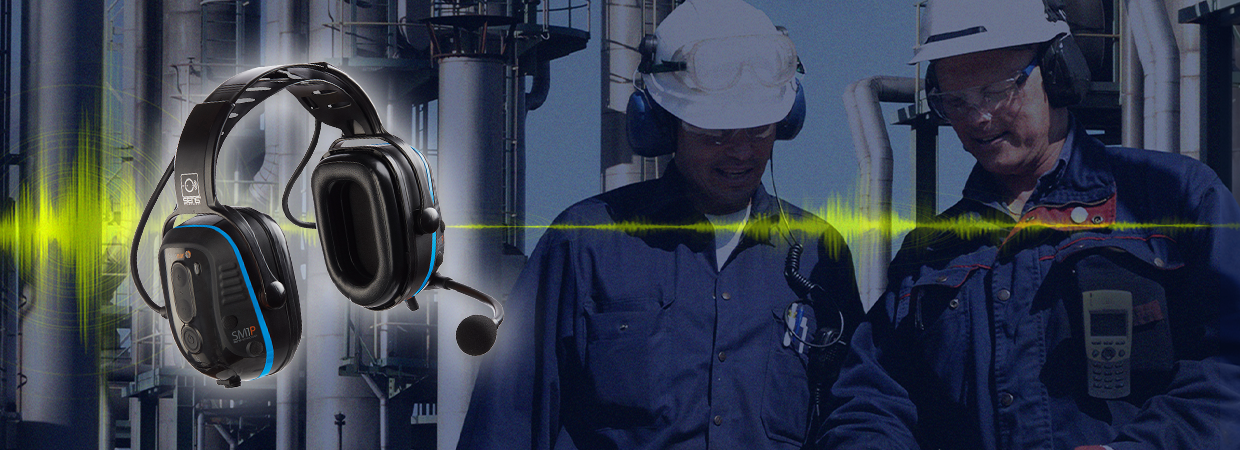- Home
- Blog
- Hazardous Locations / Intrinsic Safety
- Intrinsically Safe: A Beginner’s Guide

Intrinsically Safe: A Beginner’s Guide
 Many people are unaware of the importance of intrinsically safe headsets and equipment; in fact, many individuals do not even know what the term alludes to. A previous two-part series on this blog spent some time unpacking the technicalities behind intrinsically safe headsets. People who are completely new to the concept may have difficulty understanding some of the more complex aspects; therefore, we have written a short piece to familiarize “beginners” with intrinsic safety.
Many people are unaware of the importance of intrinsically safe headsets and equipment; in fact, many individuals do not even know what the term alludes to. A previous two-part series on this blog spent some time unpacking the technicalities behind intrinsically safe headsets. People who are completely new to the concept may have difficulty understanding some of the more complex aspects; therefore, we have written a short piece to familiarize “beginners” with intrinsic safety.
What’s In a Name?
The term “intrinsically safe certifications” is quite a mouthful and can seem quite intimidating to those who are new to the world of headset equipment. Most people like the sound of “safe headsets,” but may not understand what is meant by “intrinsically safe headsets.” The reality is quite simple; intrinsic refers to something that is essential. One can therefore assume that intrinsically safe headsets are meant to keep safe that which is essential - in this case, the user.
The Point of It All
Electrical equipment (i.e. headsets) may generate sparks in nearby electrical centers such as switches and connectors. Sparks, obviously, lead to heat – which in turn leads to potential violent explosions (which are never a good thing). Explosive atmospheres are ripened when flammable substances are present. If gas or other flammable materials are in the room when a spark is set off, the safety of the people present is jeopardized. The point of intrinsically safe headsets? Prevent the aforementioned series of unfortunate events from occurring. In other words, keep people safe.
How Intrinsic Safety Works
In order to reduce the risk of on-the-job explosions or other perilous hazards, the electrical energy and thermal energy within electric circuits must be limited. In addition, a new design must be implemented concerning circuit function in an effort to decrease the chance of fault. Intrinsic safety, as a method, does this and more. Electrical circuits are “foolproofed” when using this method, making it possible for users to navigate potentially explosive environments. In essence, intrinsically safe headsets and other forms of intrinsically safe equipment make it nearly impossible for the electrical circuits within to act as a source of ignition.
Who Should Care About Intrinsic Safety?
The answer to this question is pretty straightforward: everyone should care about intrinsic safety. Those who primarily show the greatest concern about the topic include managers of industrial manufacturing environments, employers operating oil or gas companies, and other plants comprised of possible safety hazards. Managers and employers should care about intrinsically safe certifications and equipment, such as the equipment offered by Sensear, because keeping employees safe is of the highest priority. Reducing the risk of on-the-job hazards also creates a lesser chance of involving insurance companies after potentially destructive events.
How to Tell If Equipment is Legitimately Safe
Products that are truly intrinsically safe must stand up to a rigorous set of standards put forth by experts in the field of safety. Products that stand up to these standards and pass tests with flying colors are considered “certified.” Many different agencies certify intrinsically safe equipment. The primary European agency is called ATEX, the most prevalent United States agency is called UL, the most well-known Canadian agency is called CSA, and a general provider of certification across the globe is called IECEx. Any equipment that is purchased with the intention of protecting users should be certified by one of these agencies or any other reputable certification agency. Hopefully, the information above has provided some insight into the role of intrinsic safety in headset equipment and other workplace communication equipment. For a truly safe work environment, look for intrinsically certified equipment.
For more information regarding Sensear's products, please download our buyer's guide.
Related Posts:







